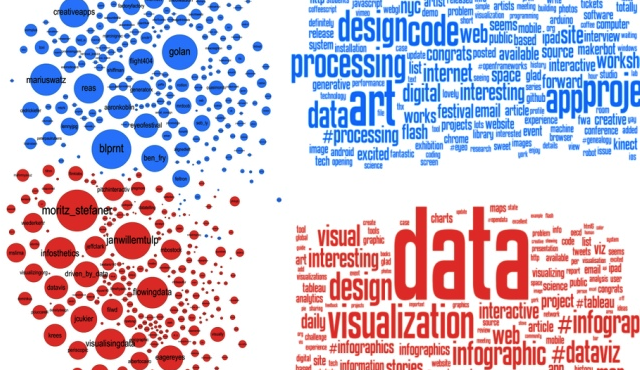The Role of Analytics in Business Process Intelligence: A RISE with SAP Perspective
by Kumar Singh, Research Director, Data & Analytics, Supply Chain Management, SAPinsider
Transformation initiatives position technology as an enabler. This enabler works best when it is aligned with optimal people and process capabilities. And yet, the ability to sync these three aspects remains a key challenge for many organizations undergoing a digital transformation journey. Before they embark on their strategic initiatives, organizations must consider whether their business processes and organizational design need to change in order to accommodate the new digital reality.
This holistic solution view is at the heart of RISE with SAP. The solution offering is a combination of three primary components. Business process intelligence (BPI) and technology migration components form the foundation for building the pinnacle capability of an intelligent enterprise. BPI is more critical in the foundational components, as it extensively leverages all three key ingredients for transformation (people, process, and technology). Analytics is one of the threads that links these three ingredients in true BPI capability.
This article will explore the critical role analytics plays in the BPI component of RISE with SAP.
Business Process Intelligence Component of RISE with SAP
The BPI component of RISE with SAP builds process foundations. Sub-components of the BPI component are shown in Figure 1. The objective of the BPI component (and consequently its sub-components) is to build best-in-class processes, process management, and process intelligence capabilities to enable organizations to become an intelligent enterprise. Each of the sub-components shown in Figure 1 plays a critical role in achieving this objective.
 According to SAP, sub-components of the BPI component include the following capabilities.
According to SAP, sub-components of the BPI component include the following capabilities.
Analyze
- Leverage predefined process KPIs and process flows
- Drill down into details based on system data
- Understand user interactions
- Access all your process data for a 360-degree view
Design and simulate
- Design future processes based on current data
- Blend mined data to simulate new processes
- Derive expected business impacts based on your operational data
Improve
- Gain process insights to drive action with process automation tools
- Enable non-technical users to create automation scenarios without code
- Create outcomes quickly with predefined content
Roll out and govern
- Manage and govern processes for end users
- Collaborate and roll out documented process changes from “Home Base”
- Tie applications to process models and get real-time process insights into SAP’s core applications
Monitor
- Monitor process performance changes and continuous transformation
- Achieve real-time blending of process performance data versus modeled processes
- Gain full visibility into the process community
Model and manage “Home Base”
- Access SAP’s dashboard to view core processes at a glance
- Manage and collaborate on processes with respective departments
- Enable quick and easy access to SAP’s Process Discovery tool
Benchmark
- Compare your business with other businesses in your industry
- Drill down into details quickly from different angles
- Receive business impact data based on your operational data
The following describes the role that analytics plays in each of these sub-components.
Monitor and Analyze: Analytics plays a central role in both of these sub-components. Descriptive analytics approaches are primarily leveraged to monitor processes and analyze their performance. This means that business intelligence (BI) tools as well as specialty business process management (BPM) tools play a key role in these sub-components. SAP’s acquisition of Signavio — a leader in the enterprise BPI and process management solutions space — highlights the role BPM and BPI solutions play in building a holistic process transformation portfolio. This monitoring and analysis of business processes can be based on historical data or near real-time data, enabling these sub-components to allow users to look at key performance indicators (KPI) of the processes to understand and evaluate process performance. If the monitoring is happening in near real time, any discrepancies that may lead to process failures, disruptions, and quality issues can be flagged immediately.
Keep in mind that a best practice is to manage capabilities in these sub-components and a few other sub-components through a centralized process management hub. In the RISE with SAP offering, this centralized hub capability has been named “home base.” This centralized capability baselines existing processes, manages and documents process changes, and designs and re-engineers business processes. You can imagine this as being a control tower for your BPI and BPM capabilities.
Design, Simulate and Improve: Like the “Monitor and Analyze” component, analytics is the key tool in these components as well but starts playing a more critical role. These three sub-components heavily leverage diagnostic and prescriptive analytics, which in turn leverage descriptive data as inputs. Prescriptive analytics approaches help answer questions like what if? and what is the best? and provide results that allow users to simulate various process scenarios and provide insights on how to design best-in-class processes and/or make improvements to existing processes. Diagnostic analytics also help improve processes by answering the question why did it happen? helping identify issues that may be impacting the process or causing process failures. Best-in-class BPI tools generally have these capabilities inbuilt with the BPM aspects.
With the advent of machine learning (ML) algorithms, they are increasingly being incorporated for diagnostic analytics for root cause analysis and failure diagnostics. Algorithms like regression and clustering are already being leveraged by many organizations.
Model and Manage: As has been the theme with all other sub-components discussed, these components also heavily leverage analytics, primarily descriptive and prescriptive analytics. Virtual digital models of business processes are created which allows those leveraging these tools to support components like Monitor, Analyze, Design and Simulate. Consider that a best practice is to centralize these capabilities in the central hub mentioned previously. Optimization models, which are prescriptive analytics models, are also leveraged in process modeling, and help answer the question what is best?
Many BPM tools have risk management modeling tools to achieve Sarbanes-Oxley Act (SOX) compliance. These models leverage predictive analytics algorithms. Predictive analytics algorithms leverage historical data points to predict future outcomes or values of dependent variables. A key aspect to understand is that all the sub-components discussed so far are not siloed and hence influence, impact, and support each other. Therefore, the end-to-end process is an iterative one, powered by analytics.
Benchmarking: Management guru Peter Drucker once quoted: “If you can’t measure it, you can’t manage it.” It is imperative that to build world class business processes, you need to benchmark them continuously, against the best. Benchmarking approaches primarily leverage descriptive analytics, however the key aspect is not the approach, but rather the numbers against which you benchmark your processes.
What Does This Mean for SAPinsiders?
For years SAP customers have expressed concerns that the intricate and massive platforms and solutions provided by SAP bring with them a set of challenges. RISE with SAP provides a one stop shop for all digital transformation needs of its customer base, irrespective of where organizations are currently in their transformation journey. And analytics plays a key role among the foundational capabilities that support this solution offering.
Some key aspects that SAPinsiders need to keep in mind are:
- Analytics is one of the core capabilities of BPI. Therefore, most best-of-breed BPI and BPM tools have inbuilt analytics capability. However, a careful evaluation must be made to determine if those requirements meet your unique business needs.
- The underlying data will define the success or failure of building world class BPI capabilities. Your analytics capabilities are as good as the data that feeds into these tools. Implement an effective and robust data collection and data management infrastructure to eliminate data latency, quality, and integrity.
- Analytics talent is the other pillar of successfully building BPI capabilities. While capturing insights and data from business processes is required, it is not useful if that data is not leveraged to generate value, like process improvements, process re-design, or process optimization. Invest in building an analytics talent pool dedicated to BPI and BPM.
- Benchmarking is not just dashboarding. Design KPIs strategically and thoughtfully. Leverage them to improve your processes continuously by benchmarking against the best in your class.








